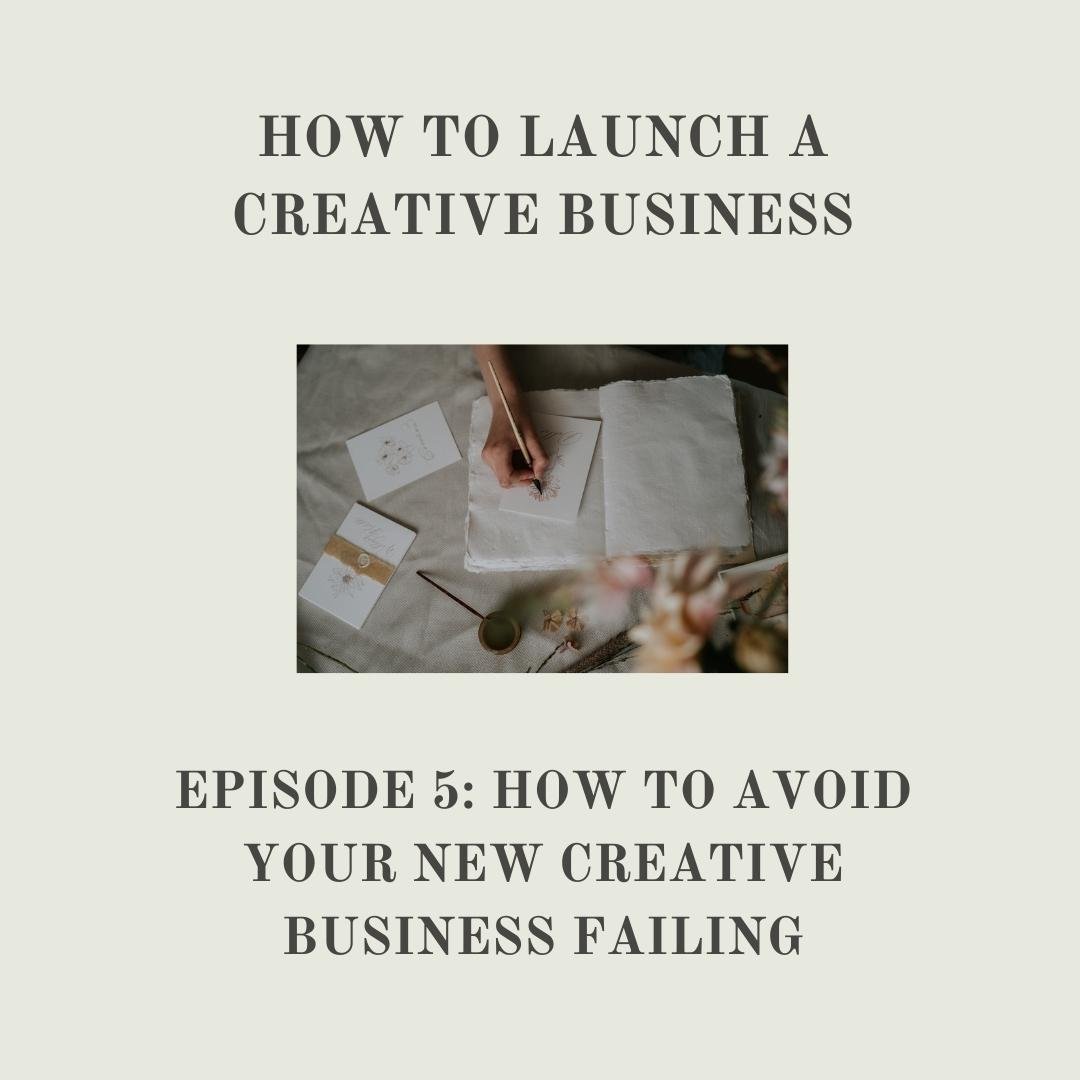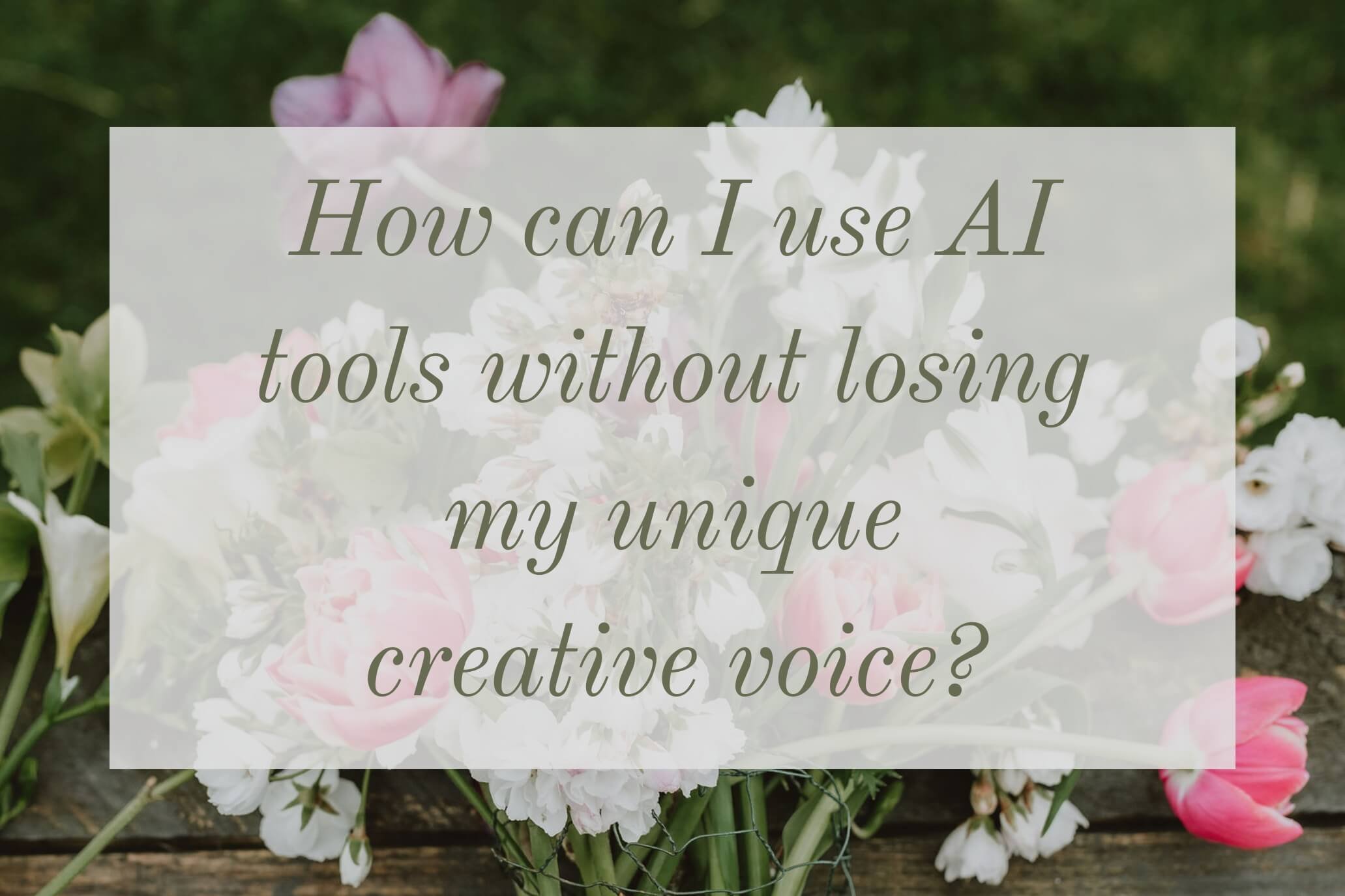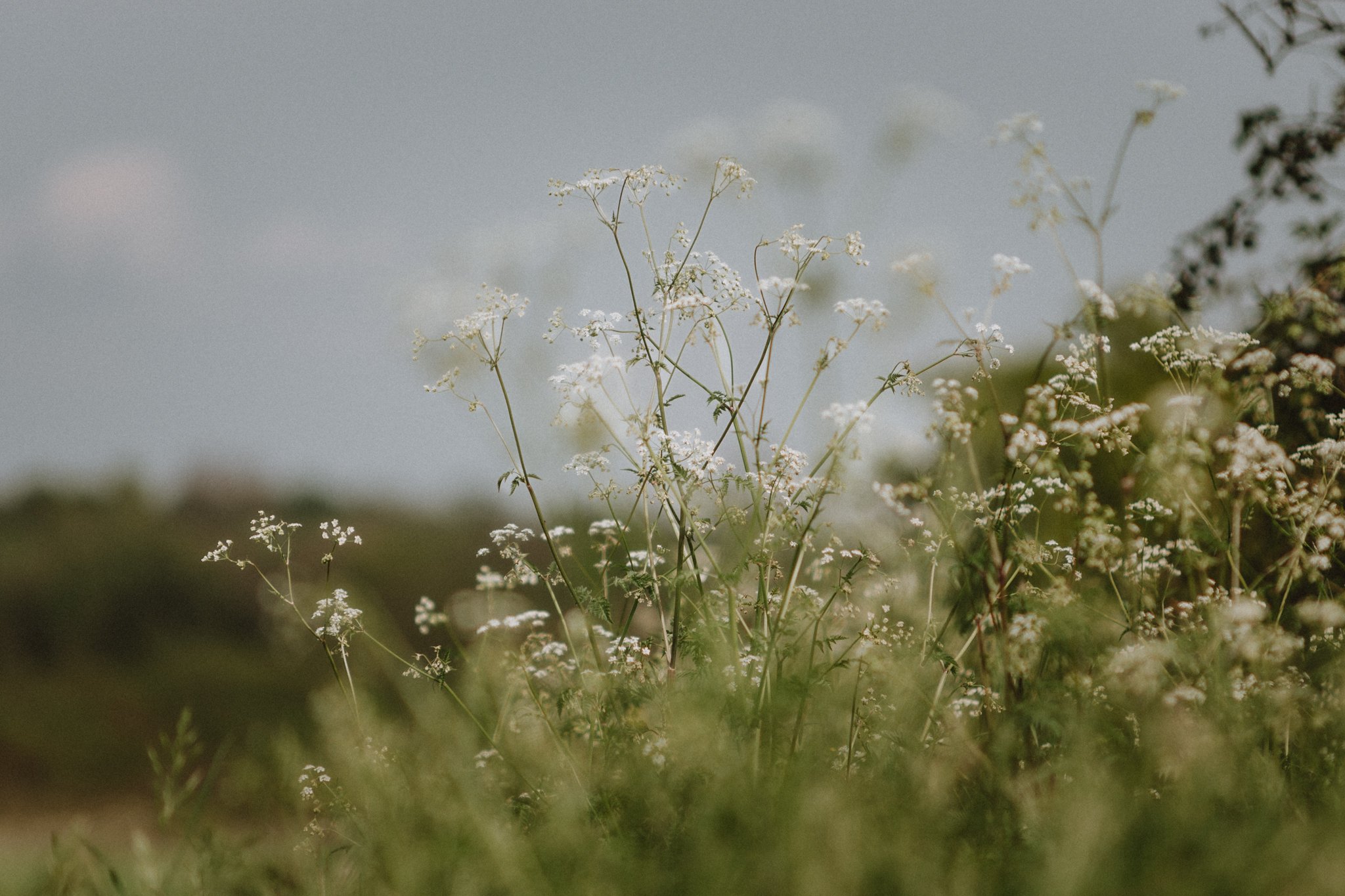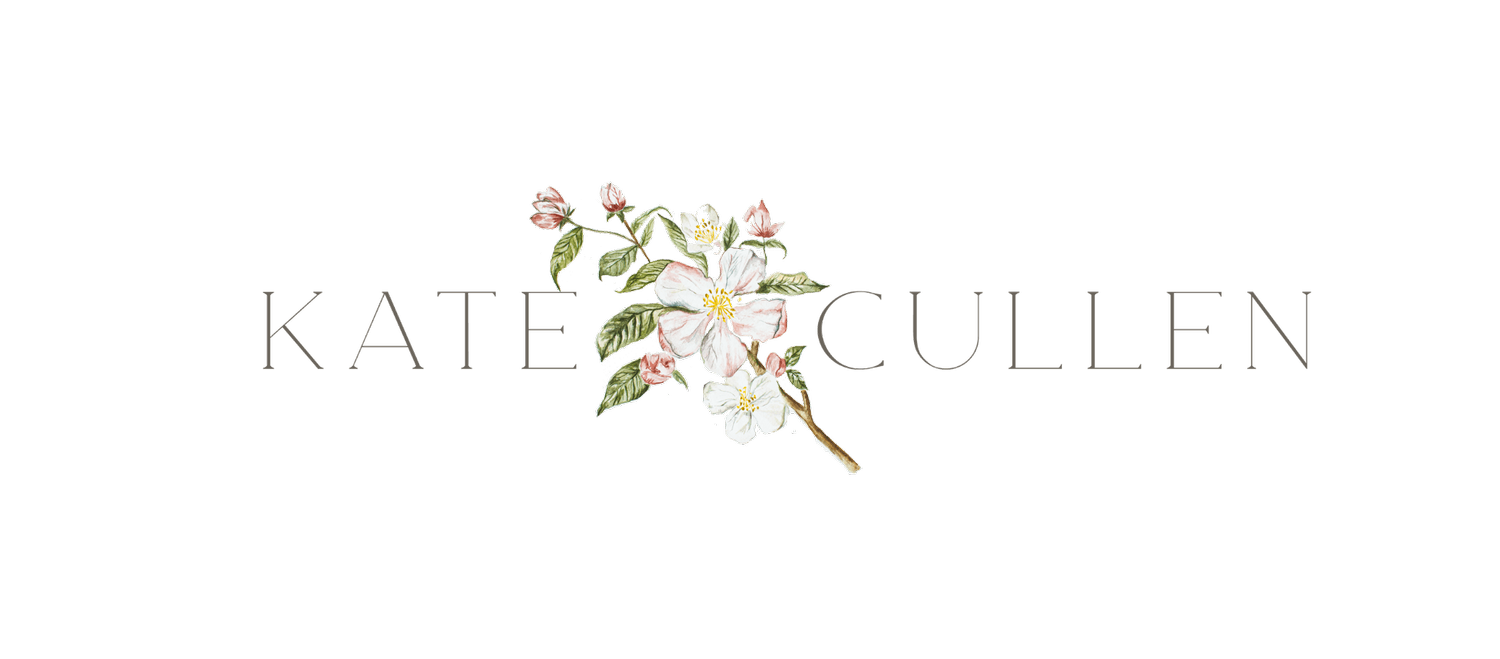
How to grow your creative business in your first year - the full guide
A summary of all my resources to assist you in growing your business in its first yearFind all the right podcast episodes, blog posts and downloadable resources you need
The following guide aims to give you all the tools and strategies you need to make your first year as successful as possible. It does however assume the following:
You know who your perfect clients are and have created a brand identity that attracts them
Your have proof of concept (you have sold some of your products or services, even if it is on a small-scale so far)
You have the dedication, time and finances in place to make success viable
If you aren’t sure if you have these three things yet, perhaps start with my launch guide and go back to basics.
Creative Businesses in their First Year: the Statistics:
Creative business owners often invest a lot of time and money into launching their new business but fall flat once the excitement and hype of launch day are over. Especially if sales goals haven’t been met for launch period, or interest as been harder to generate than expected. But rather than give up, a marker of a successful business owner is analysing what’s working and what isn’t and setting new goals for that all important first year.
The first year of a new business is often the most challenging, as businesses strive to establish themselves and build a customer base. However, the creative industries are particularly resilient, with a high survival rate of new businesses. In 2020, 70% of new creative businesses were still in operation after one year.
There are a number of factors that contribute to the success of new creative businesses. These include:
A strong creative vision
A sound business plan
The right skills and experience
A supportive network of mentors and peers
9 things to focus on post-launch in year one of business
A strategy for your first year is vital, with specific targets or goals for audience growth, sales and PR.
Once you have a strategy you can put plans in place, and can start taking steps to grow your business.
Here are 9 tips to help you grow your creative business in the first year:
Build your audience with people that love what you do
You know your target audience, so you can tailor your marketing and sales efforts to reach them. Building an email list is one of my most favoured ways of reaching people, followed by online advertising (targeted with measurable results) and PR opportunities (raising your profile and creating brand recognition). Social media can be a great organic way to build an audience, but make sure you don’t spread yourself too thinly – focussing on one channel and doing it well is better than trying to do 3 or 4 and being inconsistent.
Create a strong brand
Your brand is what will set you apart from the competition. It's important to create a strong brand that reflects your unique style and personality. Your brand should be consistent across all of your marketing materials, from your website to your social media profiles. If you launched with the basics, year one is the time to start expanding on this and getting known within your niche.
Provide excellent customer service
Customer service is essential for any business, but it's especially important for creative businesses. Your customers are your lifeblood, so you need to make sure they're happy with the products or services you provide. Go above and beyond to meet their needs and exceed their expectations. Gather as many testimonials as possible from satisfied customers to help build trust and credibility.
Network with other businesses
Networking is a great way to meet potential customers, partners, and investors. Attend industry events, join online forums, and connect with other businesses on social media. The more people you know, the more opportunities you'll have to grow your business.
Stay up-to-date with industry trends
The creative industry is constantly changing. Read industry publications, attend conferences, and follow thought leaders on social media. The more you know about the industry, the better equipped you'll be to make decisions that will help your business grow. It doesn’t have to mean that you conform to trends at all, by all means stand out by doing things your own way, but being aware of what is going on in your industry is vital.
Build a strong online presence.
In today's digital age, it's essential to have a strong online presence. Spending time working on creating great online content via your blog or something like Substack or your own email list increases the likelihood of you getting found by your potential clients.
Offer high-quality products or services.
Of course, no one is going to want to buy your products or services if they're not high quality. Make sure you offer products or services that are well-made, exquisitely thought-through and meet the needs of your target audience. This doesn’t have to equate to being the most expensive, simply that you are providing the very best on offer within your niche.
Invest in your business.
In order to grow your business, you need to invest in it. This could mean investing in professional photography, new equipment, software, or marketing materials. It could also mean investing in your own skills with coaching, training or development opportunities. Prioritise your spending on the things that will allow growth in year one on your existing offerings (ie don’t pursue developing new products or offerings until you are selling your existing ones effectively UNLESS they are not selling at all and you need to revisit your business strategy entirely).
Be patient and persistent.
Don’t let fear of failure hold you back. Growing a business takes time and effort. There will be setbacks along the way, but if you are patient and persistent and listen to your customers, you will eventually achieve success.
Be money savvy.
The income of creative businesses can be unpredictable, which can make it difficult to plan for the future or make financial decisions. Seeking investment and/or saving as much as you can to begin with will allow you to get through the peaks and troughs that inevitably come with a first year of business. It can help to add 20% onto all your cost projections as a safety net until you learn what your true costs are in Year 2.
Below I have organised my resources into categories to enable you to find what you need more easily if you are in the early stages of thinking about starting your own creative business. And if you want a full downloadable guide on exactly how to go about launching your creative business step by step then my book is available to download below - the perfect companion for all my free resources.
PODCAST EPISODES FOR NEW BUSINESS OWNERS
-

HOW TO AVOID YOUR NEW CREATIVE BUSINESS FAILING
Starting up a new creative business can be exciting yet daunting. In this episode I talk about the best things you can do for yours to ensure success and to avoid being one of the 6 in 10 businesses that fail in the first 3 years. According to the Small Business administration statistics around 20% of start-ups fail in the first year. So how can you avoid being one of them ?
-

EDITORIAL SHOOTS FOR YOUR CREATIVE BUSINESS
For those of you that are at the stage of wondering what professional and marketing imagery you might need in your business. In Year one getting the right imagery can make all the difference. I explain styled shoots, or editorials – what they are, why you should do them and how to go about organising or participating in one should you be invited.
-

WHY YOU NEED AN EMAIL LIST FOR YOUR BUSINESS
I talk about working on email list building and content is often one of the key things that my clients want my help with, or they haven’t considered how vital it is to creative businesses at all. We explore why, what and how to harness this amazing sales channel, without feeling icky, repetitive or boring, and as a way to not rely on social media as your main sales channel.
“What a wild and wonderful ride my time with Kate has been. She has helped me move my business forward, taught me things I did’t know existed and has set me on a productive path that feels exciting, sustainable and absolutely right for me.
When I first met Kate I was at a crossroads, I move forward on my own or I invest in myself and move forward with confidence. I’m so pleased to say I chose to move forward with Kate. She’s helped me put practical systems in place to nurture my business, work with purpose and give me the all important time and space to do the thing I love, paint.
Kate’s strategies have elevated my business and as long as you put in the time and dedication, that working with a coach deserves, I wholeheartedly recommend working with her. Her gentle approach, strong principles and friendly manner are a winning combination and I’ve left every session boosted with positive advice. The thing I love most is that even though we’ve reach a natural conclusion to our work together I know Kate will be there for me as my business continues to grow and develop.
You are a true wild heart Kate and my life and business are richer for knowing you.”
BLOG POSTS ON BUSINESS TOOLS & STRUCTURE
-

How can I use AI tools without losing my unique creative voice?
With the AI revolution in full swing in the media, and the constant talk about it – whether it’s the end for humanity, or simply a new technological revolution to embrace, I thought I would explore the pros and cons for us as creatives making a living our of our art, and how we stay relevant as this fast-paced technological advancement takes hold.
-

What to write in an email newsletter as a small creative business owner
Starting an email newsletter can be daunting and when you are working on your own as a solopreneur, it’s a challenge to find the time to create regular emails that also raise your profile in the marketplace. But here’s the thing, if you spend time building AND nurturing your list it will increase enquiries to your business, grow your audience and ultimately connect you with the clients you’ve always wanted.
-

Building a sustainable creative business
Lately I’ve been pondering on the ‘quick wins’ phenomenon, how the business world seems to value ‘bite size’, ‘quick solutions’ and ‘immediate results’ over sustainable, ongoing, trust building, culture-orientated, relationship-building actions – the building blocks of true success.
It's the antithesis of how I like to work, and how I believe a truly sustainable business (in the sense of your own energy, capability and passion) should be run.
BLOG POSTS ON BUSINESS MINDSET
-

How to Stay Motivated When You Run Your Own Creative Business
Running your own business can be a very rewarding experience, but it can also be very challenging. There will be times when you feel motivated and inspired, and there will be times when you feel discouraged and overwhelmed and wanting to hide away from it all. It's important to have a plan for what happens when you can’t do it all.
-

Defining success as a creative business owner
What does success mean to you right now?What is it you want your business to do for you beyond the bottom line? Defining the things that matter to you will help you set and measure your goals, as well as set the whole tone for your business and how you create your own voice amongst the noise. Your definition of success might be wildly different to someone else, so please don’t compare yourself, instead celebrate your differences.
-

Maintaining your creative energy
If you have taken the leap into charging money for your art (whether it’s designing, photography, painting, or any other creative outlet), you have no doubt become aware of the ebb and flow of your creativity. At times of great output you might create something new every day and feel energised by the commitment of ideas into reality. At other moments you might feel like you are having to force your artistry simply to maintain your income.



